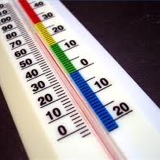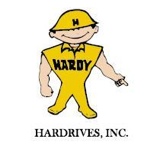Title Page
-
Conducted on
-
Prepared by
Workplace details
-
Date of assessment
-
Workplace location and area
-
Person/s conducting self-assessment
Safe Systems of Work
-
1. Do you have a safe system of work, and is there an element in that system, which supports the safety of workers and members of the public in relations to onsite traffic management? <br><br>Such as: evidence of documentation or processes in your system of work, around traffic management related hazards.
-
2. Is a TMP in place that outlines:<br><br>- The desired flow of pedestrian and vehicle movements<br>- The expected frequency of interaction between vehicles and pedestrians<br>- How short term, mobile work or complex traffic situations will be managed<br>- Roles and responsibilities of people in relation to traffic management?
Developing a traffic management plan (TMP)
-
3. Does the TMP include a sketch or illustration of the worksite?<br>This should show the location of:<br>- Traffic routes <br>- Pedestrian walkways<br>- Barriers and signage <br>- Loading/unloading areas<br>- Carparks/supply delivery waiting area<br>- maintenances bays, worksite, buildings, wash out bays and set up area<br>The sketch should also include contact details to notify when arriving at the site.
-
4. Is traffic management included in the following components of the work health and safety management system:<br>- Hazard identification<br>- Risk management register<br>- Site inspections/audits<br>- Contractor management (e.g. codes of conduct and quality standards)<br>- Procurement of new equipment (e.g safety devices on mobile plant)
Consultation Arrangements
-
5. Have you consulted with workers, mobile plant operators and your supply chain (e.g. delivery drivers) to help understand all possible risks relating to the interaction of traffic and people on the site?<br>Consideration should be give to:<br>- The types of vehicles and mobile plant accessing the site<br>- Pedestrian access for people with a disability (e.g. wheelchairs)<br>- Work involving road closures<br>- Environmental factors (e.g. road surfaces, shade, glare, lighting, weather and noise)<br>- Unexpected or changing circumstances (e.g. queuing of vehicles, peak traffic times, bottlenecks, intersections and blind corners)<br>- Work area design and layout<br>- Overhead electrical lines and structures<br>- Whether loading zones, parking and reversing areas are adequate and what happens with overflow traffic<br>- Drug and alcohol policies and procedures<br>- Work demands and fatigue management (e.g. shift work)<br>- Other traffic issues commonly encountered or reported by workers, pedestrians or visiting drivers.
-
6. Have you documented communication and consultation for coordinating significant traffic movements?<br><br>Documents can include all electronic communication, such as emails, mobile phone messages etc.
-
7. Have you reviewed previous incident or near-miss reports to better understand contributing factors and identify how the traffic management system could be improved?
Hazard, Risk Management and Reporting
-
8. Do you have a record of the identified hazards, for example in a register?
-
9. Have you conducted a risk assessment for all hazardous tasks?
-
10. Are control measures in place to eliminate or minimise risks (using the hierarchy of control)?
-
11. Is there a process for reporting incidents (including near misses) and hazards? For example, a form or book, or a verbal process?
-
12. Are workers encouraged to report WHS issues?
-
13. When someone reports an incident or near miss, is it acted on (is there an incident investigation)?
-
14. Are workers provided with feedback on the action and outcomes of any issues they report?
-
15. Is there a process in place to identify out of hours risk and hazard management for non-production workers?
-
16. Are reports developed and reviewed for trends that identify areas for improvement?
Providing information, training, instruction and supervision
-
17. Is information and instruction about safe traffic and pedestrian movement around the workplace provided in advance to visitors, contractors and external delivery drivers?
-
18. Is everyone entering the workplace informed, and their understanding checked, of the content of the TMP (e.g. via a site induction)?<br>This includes:<br>- Their obligations<br>- Pedestrian walk areas<br>- Restricted areas and lifting / loading zones<br>- Specific hazards<br>- Speed limits<br>- Signage
-
19. Does the workplace have adequate supervision in place for the work area?<br>This includes:<br>-Observing traffic and pedestrian behaviour (see the section on managing the risk of people being hit by mobile plant or vehicles)<br>- Ensuring an adequate number of supervisors or managers available<br>- Having procedures for supervising contractors and visitors
High Risk Work Licensing
-
20. Do workers who are operating forklift trucks and/or order picking forklift trucks have appropriate HRW LF Licence?
-
21. Have mobile plant and vehicle operators been trained and hold the relevant licenses for the operation of that equipment?
-
22. If the person is operating equipment that requires a high risk working licence (HRWL) and they do not hold a HRWL, are they enrolled with a registered training organisation and supervised by a person with a HRWL for that class?
-
23. Has the competency of mobile plant and vehicle operators been verified and documented?
-
24. If mobile plant is being driven on the road, workers need to have a Queensland issued driver licence to drive plant on the road, with a suitable endorsement for the plant being driven from the Department of Transport and Main Roads?
Managing the risk of people being hit by mobile plant or vehicles
-
25. Are measures in place to eliminate the risk of people being hit by mobile plant or vehicle traffic?<br>For example:<br>- Physically separating pedestrian routes with overhead walkways or solid barriers<br>- Scheduling activities involving mobile plant or vehicles at a time when workers or pedestrians are not using the area.
Level Two - Substitution, Isolation and Engineering Controls
-
26. Are measures that substitute mobile plant and vehicles with a safer work system in place to minimise risk?<br>For example:<br>- Replacing mobile plant with other loading equipment including conveyor systems, mobile walker stackers or pallet jacks.
-
27. Are measures that isolate mobile plant and vehicles from people (e.g. workers, visitors and pedestrians) in place to minimise risk?<br>For Example:<br>- Separate entries and exits for vehicles and pedestrians<br>- Dedicated areas for loading/unloading, hitching/unhitching trailers, maintenance and reversing vehicles away from people and walkways<br>- Physical isolation or separation by distance, guardrails, lock out / tag out procedures, safety cones or fences<br>- Wide traffic routes so that vehicles or plant do not encroach on pedestrian areas<br>- One-way drive-through systems to reduce the need to reverse<br>- Exlusion zones where workers might be exposed to a risk of falling objects (e.g. crane lifts)<br>- Barriers, fences or exclusion zones isolating workers or pedestrians from roads or railways, demolition work, excavations or trenches.
-
28. Are engineering and plant design measures in place to minimise risk?<br>For example:<br>- Speed limiters<br>- Presence sensing devices<br>- Interlocking gates to restrict access to areas during traffic movement<br>- Traffic signal lights (portable or permanent)<br>- Speed bumps<br>- Convex mirrors to avoid blind spots<br>- Warning lights and reversing alarms on mobile plant<br>- Adequate lighting for various times of the day
Level three - administrative controls
-
29. Is work scheduled to minimise the interaction of mobile plant and vehicle traffic and people in the same area at the same time?<br>For example:<br>- Coordinating deliveries and unloading to occur when workers and pedestrians are unlikely to be present
-
30. Is there a uniform line demarcation colour coded system in place across the work area?<br>For example:<br>- Red demarcation - restricted or no pedestrian access zones, restricted/exclusion zones and loading/unloading zones<br>- Yellow and/or white demarcation - Pedestrian walking zones and crossings<br>- Green demarcation - Operator or safe zone, no access for vehicles or mobile plant.
-
31. Are there signage and road markings in place to help manage vehicle and pedestrian traffic?<br>For example:<br>- Speed limits<br>- Driver directions (e.g. stop, give way, no entry, caution)<br>- Pedestrian crossings and walkways<br>- Parking and delivery areas<br>- Drop-off and set down points<br>- Steep gradients<br>- Start and end of road works<br>- Hazard-specific (e.g. biosecurity)
-
32. Is signage:<br>- Adequately distributed across the work area and leading up to the site<br>- In good condition (e.g. not visibly damaged, not faded and easy to read from a distance<br>- Subject to regular inspection and maintenance<br>- In accordance with AS1319:1994 Safety signs for the occupational environment based on design, size, format and fixture (if required)?
-
33. Are mobile plant operators and pedestrians provided with correct personal protective equipment (PPE) for the work area?<br>For example:<br>- High visibility clothing in high risk or restricted work areas<br>- Safety toe enclosed shoes<br>- Hard hat areas where there is a risk of falling objects
Maintenance of Mobile Plant
-
Has your mobile plant onsite been inspected frequently and maintained according to the manufacturer's instructions?
-
Is the mobile plant in good condition, no scratches, dents or other damage?
-
Is the mobile plant clean, including its tyres?<br>Clean tyres make detecting worn or defective parts easier
-
Are there records of the manufacturer's instruction, plus every inspection, service, maintenance, repair and modification carried out?
-
Is there a procedure for dealing with unsafe or damaged mobile plant?<br>The procedure should include isolating and tagging the vehicle and reporting the problem to the appropriate person.
-
Additional comments or recommendations:
Sign Off
-
Tool completed by:














